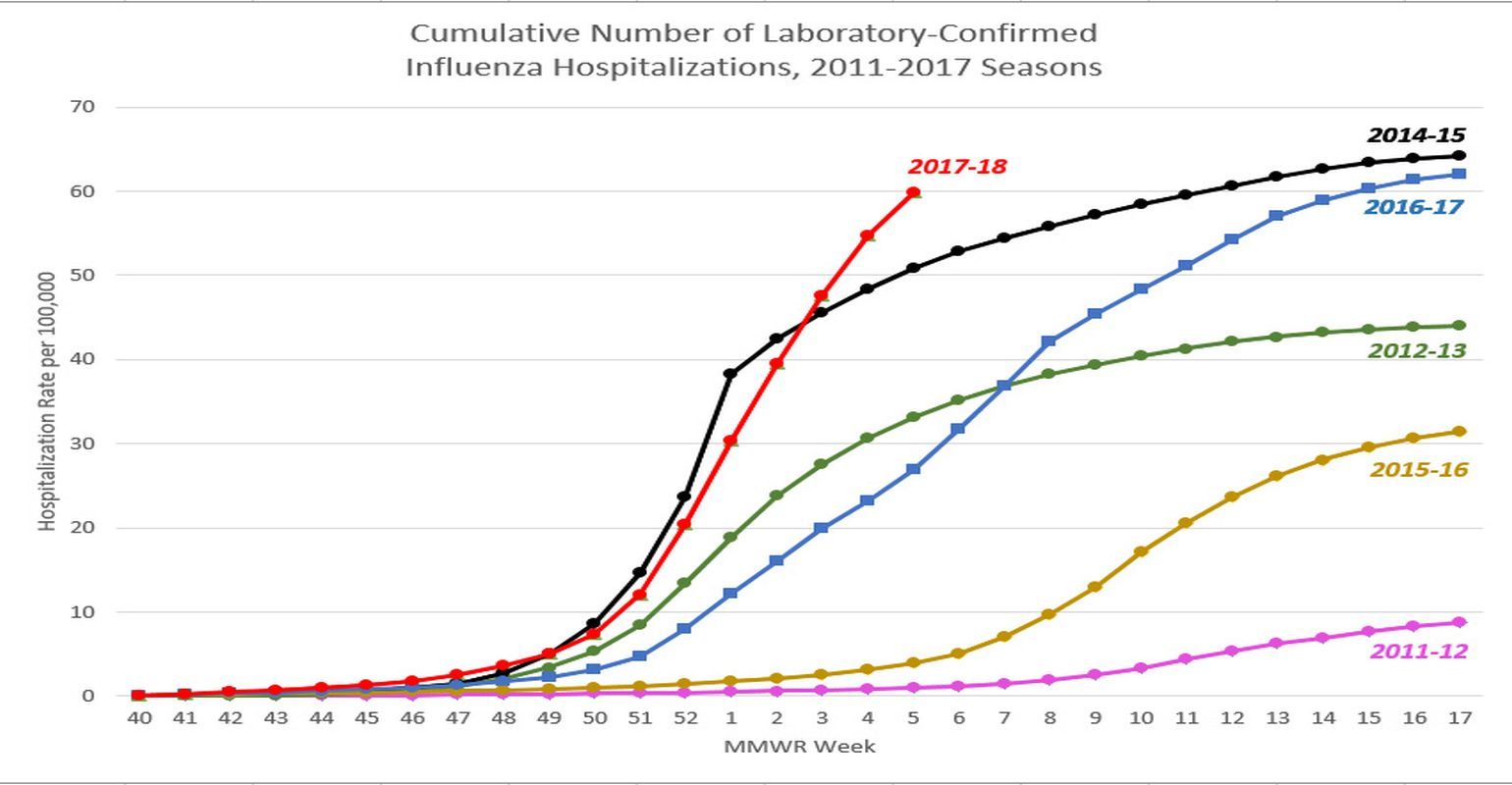Investigators Provide Update on Influenza Activity from October Through Early February
Budd, et al. (2018) report in MMWR that influenza activity in the United States began to increase in early November 2017 and rose sharply from December through Feb. 3, 2018; elevated influenza activity is expected to continue for several more weeks.

Budd, et al. (2018) report in MMWR that influenza activity in the United States began to increase in early November 2017 and rose sharply from December through February 3, 2018; elevated influenza activity is expected to continue for several more weeks. Influenza A viruses have been most commonly identified, with influenza A(H3N2) viruses predominating, but influenza A(H1N1)pdm09 and influenza B viruses were also reported.
U.S., World Health Organization (WHO) and National Respiratory and Enteric Virus Surveillance System laboratories, which include both public health and clinical laboratories throughout the 50 U.S. states, Puerto Rico, and the District of Columbia, contribute to virologic surveillance for influenza. During Oct. 1, 2017 through Feb. 3, 2018, clinical laboratories tested 666,493 specimens for influenza virus, 124,316 (18.7%) of which tested positive. During this period, the percentage of specimens testing positive for any influenza virus increased to 26.4% during the week ending Jan. 13. The percentage of specimens testing positive for influenza A viruses peaked at 21.8% during the week ending January 13; however, the percentage testing positive for influenza B viruses continued to increase through the week ending February 3, during which 8.1% of specimens tested were positive for influenza B.
To read further in the MMWR, CLICK HERE.
Reference: Budd AP, Wentworth DE, et al. Update: Influenza Activity - United States, October 1, 2017–February 3, 2018. MMWR. Vol. 67, No. 6. Feb. 16, 2018.
Robust infectious disease surveillance, including rapid subtyping of influenza A, is essential for early detection, containment, and public health reporting of novel viral threats.